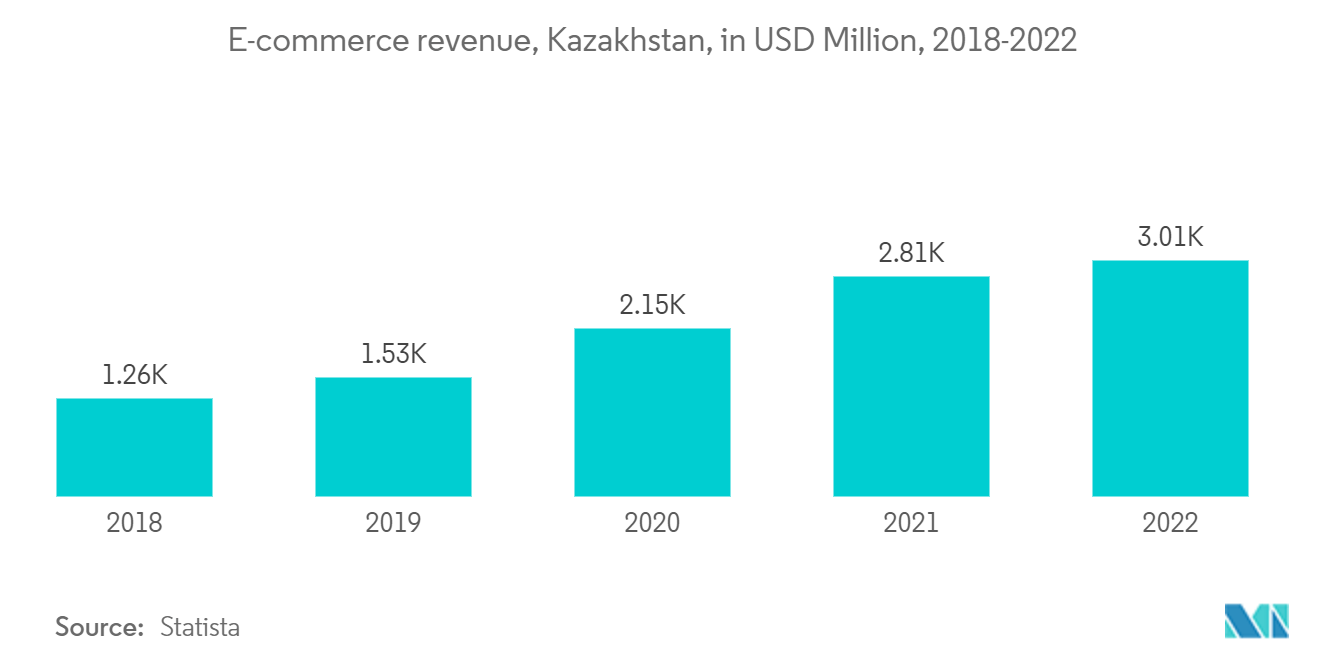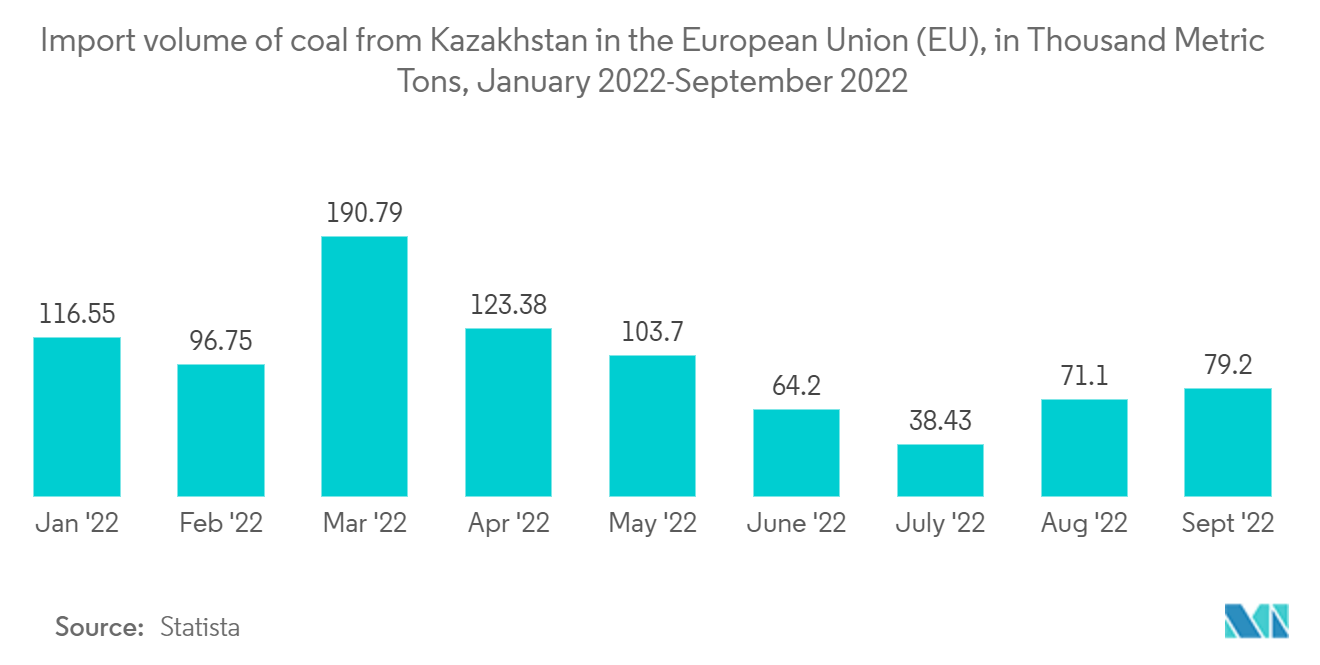Market Trends of Kazakhstan Freight and Logistics Industry
This section covers the major market trends shaping the Kazakhstan Freight & Logistics Market according to our research experts:
Kazakhstan Freight & Logistics Market Trends
The digital economy is becoming a new reality in Kazakhstan, with online purchases and payments by card or smartphone becoming part of people's daily routines. Online commerce is gaining traction, with online retail sales expected to reach 482 billion tenges (USD 1 billion) by 2021. Almaty, Kazakhstan's former capital and largest city, leads all other cities in terms of online retail sales volume, with KZT 272.8 billion (USD 607.4 million), or 56.6%. Nur-Sultan comes in second with KZT 49.2 billion (USD 109.5 million), followed by Shymkent with KZT 29.5 billion.
With the advancement of new technologies, the variety of products available for purchase online has grown significantly. According to the analytical website Ranking.kz, phones were expected to account for nearly one-fifth of total online retailing volume in 2021. Household appliances, cosmetics, computers, car parts, and construction materials are the next most popular items purchased online. Increased broadband internet coverage has also boosted online sales. According to Ranking.kz, there were more than 17 million cellular subscribers with internet access in April 2022 and 2.8 million registered fixed internet subscribers.

Increase in Cross-border Sea Freight Driving the Market
Due to increased demand for rail transport, China and Kazakhstan are building a third railway on their border, another sign of growing connectivity between the two neighbors that could help boost trade between China and the broader Central Asian region and beyond. According to Chinese experts, the construction of the Central Asian railway network will not only help boost China-Central Asia cooperation and local economies but will also add resilience to China-Europe trade links via the cross-continental rail link. The opening of the new route could alleviate the burden on road transport while meeting the growing demand for trade between China and Europe and China and Central Asia.
Rail transports the majority of transit and export-import cargoes, accounting for 52.2% of total freight turnover. Kazakhstan's geographical location qualifies it to serve as a transcontinental and transit link between Europe and Asia. Uzbekistan (45%), Kyrgyzstan (20%), Turkmenistan (6%), Tajikistan (9%), Afghanistan (5%), Russia (5.6%), and China (4.5%) are the top transit cargo destinations. Rail transport is crucial in the Euro-Asian Transport Links (EATL) and intermodal services sectors. The majority of rail freight (80%) consists of bulk commodity shipments such as oil, ferrous metals, metal scrap, coal, and grain. The Trans-Caspian International Transport Route (TITR), also known as the Middle Corridor, is one of the few viable options for rail freight transport between China and Europe. The majority of rail freight consists of bulk commodity shipments such as oil, ferrous metals, metal scrap, coal, and grain.
Long-distance trade in and across Central Asia has been unappealing for years due to a lack of effective trade agreements and changing national trade laws, which increased rail transport costs and unpredictability, as well as poor service coordination and time-consuming border crossings. Despite these obstacles, the number of express container trains traversing Central Asia increased from 17 in 2011 to more than 15,000 by 2021. This was accomplished through political will, regional cooperation, and rail reform. Rail transport has also thrived within the region, facilitating trade flows between the People's Republic of China and Central Asia while also contributing to dialogue and transboundary cooperation. This impressive growth can be attributed to simplified processes such as single window and single stop operations, as well as reduced border inspections.

